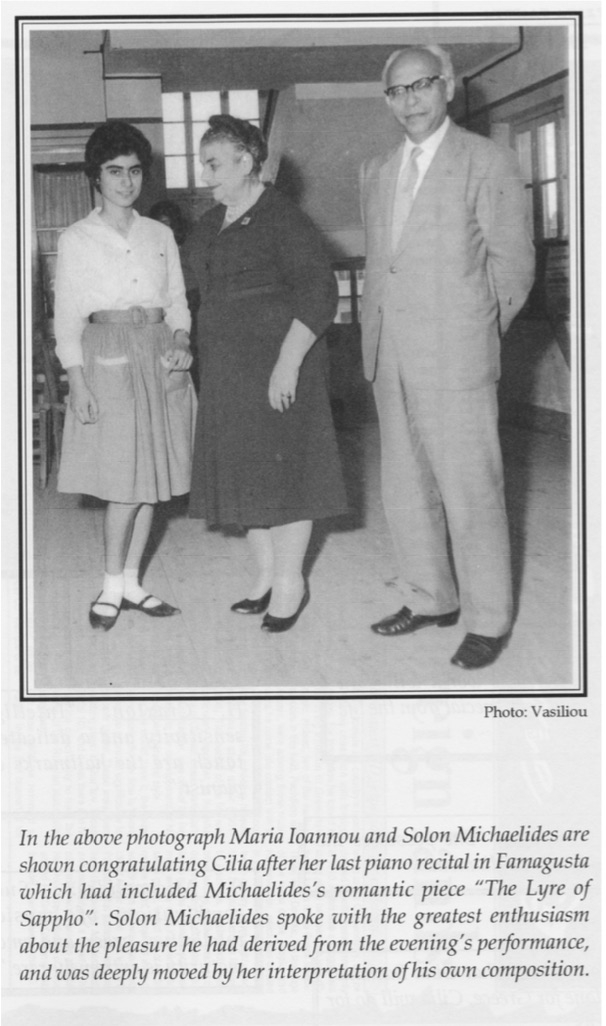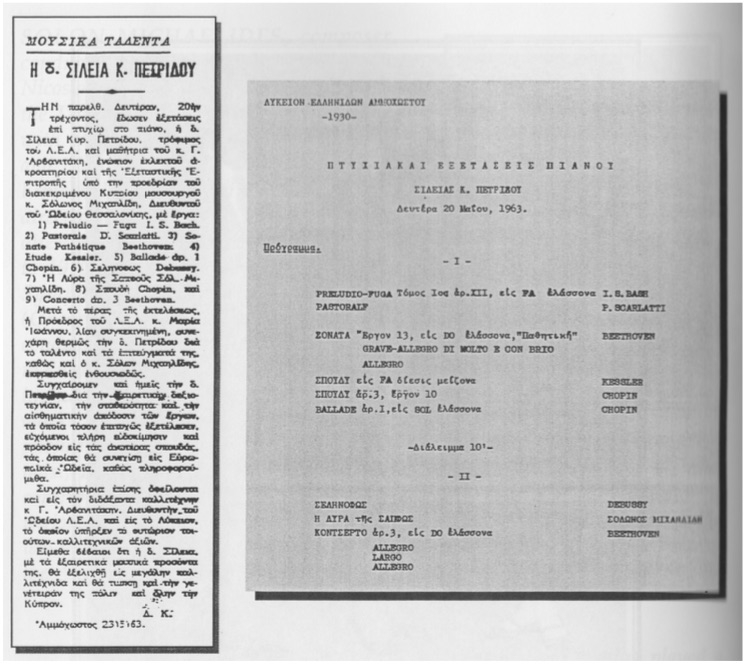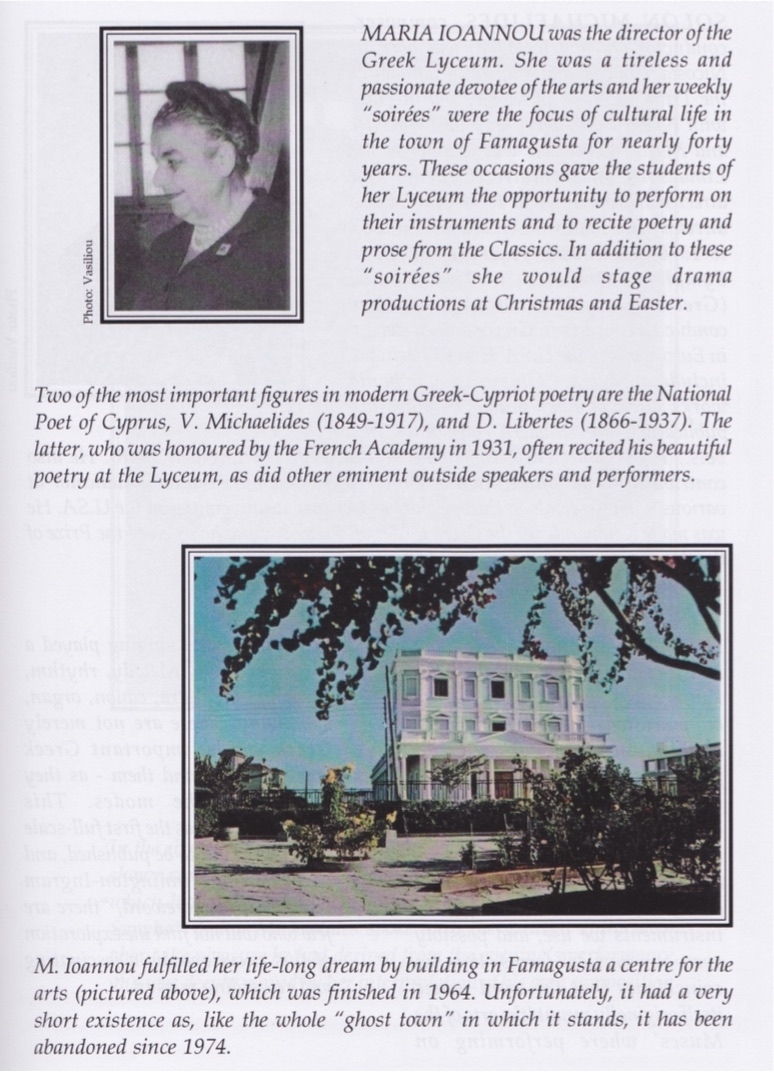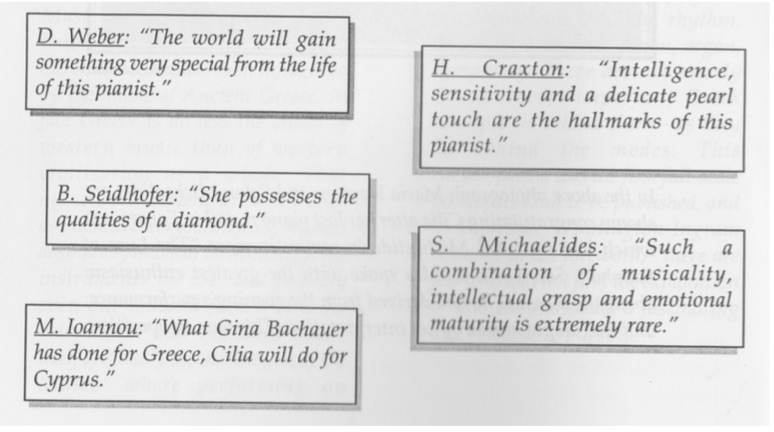Welcome to my FAQ Page
My FAQs page will be upgraded regularly.
I hope that, as it develops, this page will answer your questions.
It should give clues to those who do not listen to Classical Music and to those who listen only occasionally - and also, whenever necessary, to regular listeners.
"Sounds of the Chionistra"
Chamber Music and Vocal Music
Divine Art label
The feedback I get is that my Chamber Music has a general direct appeal, and the most frequent comment is: "Very atmospheric".
My Vocal Music, on the other hand, seems to appeal directly only to devotees of Classical Music.
At least three listenings appear to be necessary in order to start anticipating the music as it flows.
Question
I am in my twenties, and was given "Sounds of the Chionistra" as a present last Christmas. While liking the atmosphere of the Chamber Music, I find that from time to time my attention tends to wander.
Can you give me any tips on how to stop this?
Answer
My father-in-law, a retired teacher, had a passion for music, and one of his greatest regrets was that he did not have the opportunity to learn to play an instrument when he was young. In later life he taught himself to play the recorder.
Nevertheless, I was amazed at his musical knowledge!
When I first met him, he would spend at least four hours every day listening to classical music - symphonies, concertos, chamber music, opera etc.
In the course of our conversations he mentioned once that, as a young man, he had found very helpful the advice of pianist and musicologist, Ella Kidney, his mother's first cousin.
Ella Kidney's advice was that one has to keep one's mind on the music at all times as music flows, and when concentration lapses, information gets lost.
He kept this advice in mind, and found that over time he was able to focus on the music for longer stretches.
The best way to keep the mind focussed is to give it something relevant, to concentrate on during the flow of the music.
If you click here, the score of "First Loss" (the second movement of my Piano Quartet, "Childhood Memories") will appear, and can be downloaded.
Follow the Viola part on the score, as the Viola is the instrument that expresses the grief of my first loss - in my early teens.
The Viola is a beautiful instrument, and on the "Sounds of the Chionistra" is played exquisitely by Steven Burnard.
I can assure you that if you follow the Viola part a few times, you will find that its warm melodic line will stand out in your mind, and that in the process your awareness will expand to include the accompanying instruments - Violin, Cello and Piano.
Question
I enjoyed listening to “Sunset” by Libertis at All Saints' in London.
Do you intend to release it on a commercial CD? May I know the name of the singer?
Answer
I am glad you enjoyed “Sunset”.
It is my intention to release a commercial CD with “Sunset” on it.
You will know the name of the singer just beforehand.
The singer enjoyed singing in our Greek Cypriot dialect, and found the warm sound of words like tzi'e, meaning “and”, and eklishian, meaning “church”, very satisfying.
Question
I am in my mid-thirties and regularly listen to Chamber Music.
I love your Chamber Music on “Sounds of the Chionistra”. Is the light style of performance intentional?
Answer
The light style of performance is intentional.
I asked the Ellerdale Piano Trio to give me as light a performance as possible! The result is excellent. Lightness in playing is a difficult thing to achieve!
Imagine yourself sitting under a plane or eucalyptus tree during siesta time, with clear blue sky and brilliant sunshine – and having a light and intimate chat with your close friends.
This is how I would like my Chamber Music to sound.
Question
Can you release some of your early photos?
Answer
I love flowers. Here is one where I am picking daisies from a meadow (aged 6).

Question
What has happened to those amazingly beautiful but very demanding songs “Lullaby” (words traditional, Byzantine) and “Scent of the Rose” (poem by K. Palamas)? Have they been recorded?
Answer
Yes, they have been successfully recorded by two amazingly beautiful and strong voices. I will let you know the names of the singers nearer the release of the CD.
Did you know?
The Romans were captivated by our Greek language and culture!
The words Greece and Greeks are modern versions of the Roman words Graecia and Graeci.
The name of our country was, and is, Hellas! Its people were, and are, Hellenes!
Question
When you were a child what came first – music or poetry?
Answer
I would say that I was introduced to music and poetry at the same time.
My mother was a boarder at the American Academy in Nicosia from the age of 15 to the age of 19.
She had the good fortune to have as a lecturer in English literature someone who had the gift of transmitting to her students her own enthusiasm for the subject, and my mother in turn transmitted this enthusiasm to me.
Click here to see samples from one of my mother's poetry notebooks of 1937.
Question
Which is the best way for a beginner to approach vocal music?
Answer
Start by studying the lyrics.
Here is an example.
“What Love Is” is a very short poem in Greek by Fokion Panas, which I found irresistible.
Click here to see this beautiful poem and its translation.
When you have contemplated the lyrics, click here to find the score - and follow it whilst listening to the song on “Sounds of the Chionistra” CD1.
Do this - first by following the transliteration of the words of the poem in the score – then by following the music. Go through the above process once or twice.
Following a score is always helpful, as it helps to focus the mind.
It is also very helpful to compare contrasting songs.
Lesley-Jane Rogers is a singer with a beautiful and very versatile voice.
Listen to her interpretation of “Optimism” on “Sounds of the Chionistra” CD1. This song needs a big voice with a lot of attack.
If you compare the above interpretation with her interpretation of “What Love Is” on the same CD, you will be struck by the contrast.
Her artistry is such that she adapts her voice to express perfectly the delicate and “jazzy” nature of “What Love Is”.
Jennie-Helen Moston provides a musical accompaniment to both the above songs.
Did you know?
Goethe (1749 – 1832) - considered one of the greatest German literary figures of the modern era - thought that if Europe had followed Homer rather than the Bible, history would have followed a better course.
The Greek alphabet modified the earlier Phoenician alphabet to represent vowels as well as consonants. This innovation (around 750 BC) completed the process of simplification needed to make writing, in all its forms, accessible to everyone. Laws, for instance, would ultimately be written down for everyone to read and understand – vital for the subsequent democracy. However, such writing in prose was not to follow until about 550BC. Early writing was entirely in the form of metrical inscriptions.
“Für Elise”
I have had very many requests to write the full story behind my relationship with Beethoven’s “Für Elise”.
As this most delightful composition has followed me from the age of 7 to the age of 70, and people seem to want to know the complete story, I have decided to include it in my FAQ page.
When I was seven years old, my mother gave me as a birthday present six booklets on the lives of Bach, Mozart, Beethoven, Schubert, Chopin and Schumann.
The presentation of these booklets was excellent.
There was a silhouette of a horse-drawn carriage on the cover of each one, and a few silhouettes of the composer amongst the text. I loved these booklets, and kept reading and re-reading them - constantly asking for more of the same, and for music by Beethoven.
Unfortunately, most of my mother’s music had got lost whilst in storage with her piano. The only music that had come back with the instrument when it was delivered to our new house (which we had moved into when I was four years old) were Liszt Hungarian Rhapsodies and Studies, and Chopin’s Waltzes. No Beethoven!
My mother kept saying: “When we visit ‘Delta’ Music Shop in Nicosia we will buy more music - including music by Beethoven.”
As my mother was always very busy, the visit to ‘Delta’ Music Shop did not materialise until Christmas 1953, when I was more than eight years old.
During the one-year-and-four-month wait for this great event, the ‘Delta’ Music Shop assumed the mythic quality of the ‘Golden Fleece’!
Finally the time came to visit ‘Delta’!
My mother arranged the taxi to take us to Nicosia a week in advance, as she did not want to share with another passenger.
The day before we were due to travel, however, the taxi driver visited us and asked whether we would mind sharing with a “musician gentleman”. My mother did not like the idea at first, but she finally agreed.
The “musician gentleman” turned out to be the pianist, George Arvanitakis.
During the journey, I could see that my mother, contrary to all expectations, was enjoying a lively musical conversation with her fellow passenger, who eventually became my piano teacher.
On our arrival in Nicosia my mother, always very sociable, embarked on yet another lively conversation - this time with the proprietor of the ‘Delta’ Music Shop - which left me free to explore this amazing “Aladdin’s Cave”! I wandered around in amazement at the sheer number of music books displayed - reading the names of the composers and flicking through the pages of the music.
The “Grand Finale” was the discovery of the music of “Für Elise” - the first piece I came across on my arrival at the Beethoven section.
I started going through the music, and got so involved with it that I did not look at anything else after that!!!
When the proprietor and my mother came towards me I told them that this was the most beautiful music that you could imagine. My mother gave me a surprised look and said: “I thought you love Liszt and Chopin.” “I do love Liszt and Chopin”, I replied, “but this is music from heaven.”
From then on, “Für Elise” became my “Bible”.
When I entered the LEA (Famagusta Music Centre), I performed “Für Elise” at one of the Thursday Concerts. My aunt and godmother, Dr Eleni Achilleos, and my aunt, Antigone Nicholaides, made a special trip from Paphos to be in the audience. Everybody loved it and, during the month that followed, I performed it countless times in people’s homes.
After the “Fur Elise” I started sight-reading the first volume of Beethoven Sonatas that my mother had bought for herself.
When my mother found out, she explained that this music was too demanding and suggested that I leave it for later when my hands got bigger! I agreed, but asked whether, until then, I could just look at the music, playing each piece once when I had learned it.
She smiled, gave me a kiss and said: “Not more than once and very, very slowly”. Looking very strict, she added: “If I hear anything fast this volume will help to light your grandma’s next bonfire ……”.
One day my mother came home early after visiting one of her friends, - that was the only time that I could try the music at full volume and speed - and thus discovered that I had been breaking our agreement. She said: “The choice is bonfire or the safe in your Dad’s shop.” I chose my Dads’ safe!
At the time I used to go to the LEA twice a week - once for a piano lesson, and once for a poetry and elocution lesson.
Finishing my lesson early on one occasion, I decided to call in at my Dad’s shop, as six months had passed since the music had been buried in his safe and I really missed it.
My Dad agreed to open the safe, but said: “Just ten minutes and then go home.”
In fact, it was about half an hour before I set out for home.
When I reached the NAAFI, whom did I meet but my mother - looking for me! You can imagine what was said!
In fact, it took two years for the music to come out of my Dad’s safe! (By the way, an incident outside the same NAAFI is related to my String Quartet!!!)
When I entered the Vienna Academy, some years later, the first recital I went to was Wilhelm Kempff’s. How delightful to hear “Fur Elise” amongst his encores!!!
It brought back vivid memories of the exciting moment when I first discovered that piece at the ‘Delta’ Music Store!!!
I would like to link that earlier moment of discovery with another experience that filled me with joy - my first visit to the Record Store in Vienna! To see, feel, read, touch all those record sleeves, to buy and listen to the interpretations of all the performers that devote their lives to the practice of their Art …. what a treat !!!
Indeed, touching scores in the ‘Delta’ Music Shop in Nicosia and records in the Record Store in Vienna were two of the most unforgettable and magical experiences of my life.
Last Christmas I went to the CD and DVD section of one the main supermarkets - looking for a DVD to give as a Christmas gift. It filled me with sadness to see so many CDs and DVDs on the floor, being kicked about by busy shoppers. This indicated to me a lack of awareness of the sheer amount of work involved in producing these little plastic boxes.
I wonder whether the ease by which we obtain our information nowadays contributes to this?
When at the Royal Academy of Music in London, I was given Beethovens’ Opus 109 Sonata to study. As soon as I looked at the score that same feeling of excitement, (first felt on my discovery of “Fur Elise”) returned - and from that moment onwards the Opus 109 and Liszt’s Mephisto Waltz were two major works that I never parted with.
When I started auditioning singers to record a group of my songs, I was delighted when Alison Smart (the 40th singer I interviewed) showed a special rapport with the songs and was also able to meet their technical challenges!
She was even able to sing the words of the melismas in my “Lullaby”! (This was something which I wanted, but had thought was probably impossible.)
Alison has a beautiful voice, and her exquisite legato and melismas in my “Lullaby” - both very difficult to achieve - can be enjoyed by everyone when the recording of these songs is released.
My mother always longed to return home to Famagusta. As this was not possible, she often liked to visit her old haunts in London.
During one of our visits to Highgate Village (a place she was very fond of) we met three ladies about the same age as my mother. As they were approaching, my mother told me to listen to how the lady on the left would start the conversation!
The lady in question gave my mother a big hug, and addressed her as “the mother of the girl with the flying fingers”!
During the course of the ensuing conversation a riddle was solved.
“Mrs Petridou, something puzzles us! How could your husband write an article about his daughter in a major daily newspaper?”
My mother laughed her heart out, and explained that the article was written by Mr. Costas Petrides (a dentist, not ours), who was also a good cellist.
Last Easter I visited Highgate Village myself and, by chance, I met one of these ladies again.
As soon as she saw me she said: “I did not know you write music as well. A friend bought your CD and says that your music is irresistible! I told her to give me a copy for my birthday, which is coming soon.”
Before we parted, she said she had always wanted to play an instrument but - thanks to the Famagusta LEA - became a good listener!
She then made the following comment:
“By the way, did you know that, after your success with “Für Elise”, whenever you performed you were the only student for whom the other half of the hall was opened with extra rows, as you always attracted a larger audience? That extra area was normally opened for VIPs only.”
“How do you know?”, I replied.
“I used to help with the seating arrangements at the LEA.”
Beethoven figured again in a long conversation I had once with Nadia Boulanger -mainly about Stravinsky’s “Rite of Spring”.
As we finished, she said: “Next time you are in Paris visit me for another interesting musical discussion.”
Before we finally parted she asked me who my favourite classical composer was.
“Beethoven”, I said - to which she replied: “Go through the Bach ‘Preludes and Fugues’ and Beethoven Sonatas three times during your career. They will bring you to a new dimension!”
I followed her advice, and she was absolutely right!
P.S.
Click here to see the stamp of the 'Delta' Music Shop on the cover of my first harmony book, which I started with at age 11.
Nr.4 Alexander Street
Earlier on I suggested a way of approaching my chamber music which you found very helpful.
Perhaps the following childhood story, which affected me deeply, will help prepare your mind to enter the world of “Evtho”, one of the works on my double CD, “Sounds of the Chionistra”.
When I was four years old we moved from our home in Salamis Street (which leads to Ancient Salamis in the outskirts of Famagusta) to Nr.4 Alexander Street - in the centre of Famagusta.
This new house had a veranda, and opposite there was a field of tall eucalyptus trees.
Whenever there was a breeze the scent from the eucalyptus trees was intoxicating and the gentle sound of the branches mesmerising.
I used to love our veranda …..
A few days after we arrived, as I was gazing at these tall eucalyptus trees from our veranda, the bells of nearby St. Nicholas Church started ringing. The sound was very sad.
When I asked my mother, who was busy unpacking, why the bells were ringing so sadly she simply replied: “Come and help me unpack your books!”
By then I could hear the sound of many people coming towards our house.
I rushed back to our veranda and saw a hearse, followed by large groups of people sobbing and wearing black.
This upset me a lot and I started crying.
My mother said quietly that it must be a child, and that we should make the sign of the cross (so that God may rest its soul) and pour a little water on the soil in the garden (for a peaceful journey).
As our street lead to the cemetery, this was something I would have to get used to, and so my mother bought me a “stamnoula” (small ewer).
She told me that whenever I hear the bells ringing sadly and see the hearse passing by I should lower my head, make my cross, pour the water on the soil of our garden and wish the deceased a peaceful journey.
When she came back from her first holiday in Cyprus she brought me a “stamnoula” as a present! Click here to see it.
Just before her last “journey” she often used to tell me that it upset her that she had never said the last goodbye to so many loved ones. She always finished by saying: “Cilia! Let us hope we get Famagusta back soon!”
The interpretation of “Evtho” on my “Chionistra” CDs comes from a group of highly gifted musicians.
Start by concentrating on the cello and play the music several times.
I am sure the expressive power of Jessica Burroughs’s cello playing will definitely touch your hearts.
Then turn your attention to the magnetic sound of Richard Russell’s clarinet and to Lukas Kargl’s warm and powerful rendering of the part of Costas.
Question
I cannot read or follow a score. Could you suggest another way of getting to know a new and complex piece of music?
Answer
Play the music once or twice a week - very softly, as if it comes from a distance.
Carry on with this until you get “in tune” with its atmosphere.
You will find that after a few weeks some sections will become more recognizable than others. Once you experience this, gradually raise the volume until it reaches a level you are comfortable with.
Eventually, the new piece should become as familiar to you as your favourite nursery rhyme. You will hear the music in your head at the mere mention of its title.
Did you know?
Something that might interest readers of this page is the following (which I am quoting from the September 2017 issue of the “PRS for Music” magazine):
“The thrill of hearing something unexpected is explored in a recent study from the journal Frontiers in Human Neuroscience, which found that harmonic surprise triggers a rush of dopamine in the brain: essentially the moment a person gets ‘chills’ from a song.”
Question
Can we see some of your childhood musical action photos, photos with your mother and photos of your hands?
Answer
We came to the UK to study, and the intention was that we would return afterwards. For this reason certain items were left in Famagusta (now a ‘ghost town’) - amongst them one of my mother’s albums with early photos of my musical activities.
Unfortunately, I therefore have no musical action photos to share with you.
Here, though, are a photo of myself, one with my mother and photos of my hands.
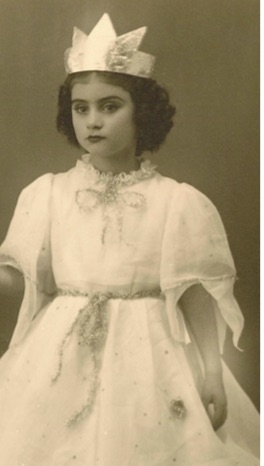
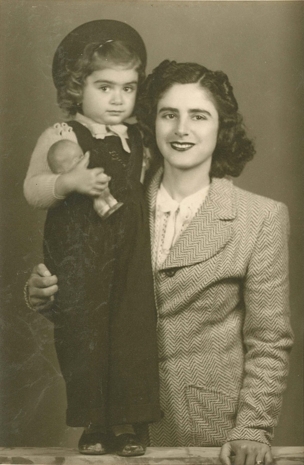
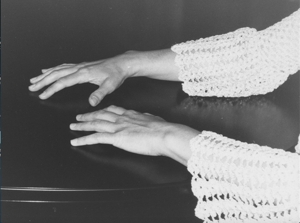
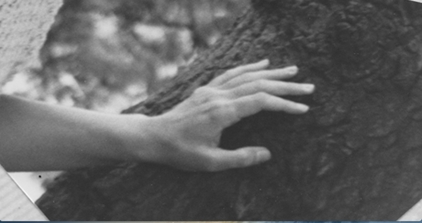

“The Collar”
This is the title of my String Quartet which appears in the chamber music section of my double album “Sounds of the Chionistra”.
It is a personal musical portrayal of an incident that happened to me when I was ten years old. (You can read about it in the booklet accompanying the above album.)
Recently I watched a three-part series on Bashar Assad in Syria.
At one point I found that I had stopped following the programme and that my head was filled with the sound of the music of “The Collar”.
The eeriness of the empty streets in Syria had reminded me of the eeriness of the empty streets in Famagusta in 1955 - an eeriness combined with the sounds of heavy boots, gunshots and the word “Halt!”
This showed me that “The Collar” is a very important part of my musical output.
The interpretation of the musicians on the CD is very powerful - expressing every subtle nuance of the music.
My last concert in Famagusta
Below are a photograph taken after the concert, followed by the programme and a review in “Eleftheria”, one of our national newspapers, some information about the Greek Lyceum where the concert took place and some comments about me.
